#one of three sisters known as the Gorgons
Explore tagged Tumblr posts
Text
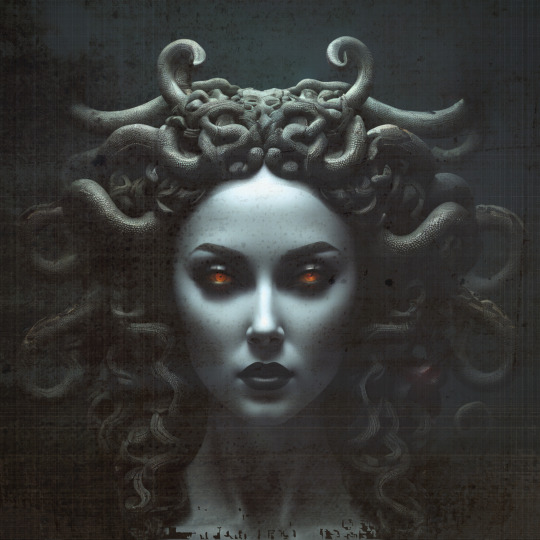
Medusa, one of three sisters known as the Gorgons, a chthonic monster in tales from Classical Antiquity, whose gaze turned men to stone.
#medusa#medusa's gaze#classical antiquity#Medusa#one of three sisters known as the Gorgons#a chthonic monster in tales from Classical Antiquity#chthonic#hellenic mythology#the gorgons#ancient world
51 notes
·
View notes
Text
It's kind of sad that people know more about Ovid's Medusa before the original Medusa.
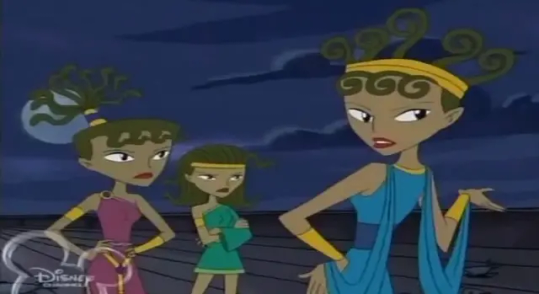


I mean, it's good that people use her to make Greek mythology more known, but I feel like people should take advantage of how intimidating the original Medusa was...




It would be terrifying...

#greek mythology#gorgon#medusa#The OG Medusa#It's sad that this version is not that known#people should illustrate it more in media#I honestly feel like people just use the Ovid version to hate on Perseus#or as an excuse to hate the Greek gods in general#but that's a can of worms that I better not open#curious that of the three versions that I placed Jake Long is the only one that made Medusa and her sisters monsters from the beginning#magical girl ramblings
579 notes
·
View notes
Note
Hi I'm currently writing for a Medusa Themed story, and want the lore for Medusa please
Writing Notes: Medusa
Medusa - (in Greek mythology) the most famous of the monster figures known as Gorgons.
She was usually represented as a winged female creature having a head of hair consisting of snakes.
Unlike the Gorgons, she was sometimes represented as very beautiful.
She was the only Gorgon who was mortal; hence her slayer, Perseus, was able to kill her by cutting off her head.
From the blood that spurted from her neck sprang Chrysaor and Pegasus, her two sons by Poseidon.
The severed head, which had the power of turning into stone all who looked upon it, was given to Athena, who placed it in her shield; according to another account, Perseus buried it in the marketplace of Argos.
Heracles (Hercules) is said to have obtained a lock of Medusa’s hair (which possessed the same powers as the head) from Athena and given it to Sterope, the daughter of Cepheus, as a protection for the town of Tegea against attack; when exposed to view, the lock was supposed to bring on a storm, which put the enemy to flight.
From The Oxford Companion to World Mythology (2005):
Medusa - The only mortal member of the family of horrifying clawed and winged Gorgons, whose heads were covered in serpents.
Medusa began her life as a beautiful young woman.
But the Greek goddess Athena changed her hair into serpents as a punishment for her having defiled her temple by way of a relationship with Poseidon, a relationship that resulted in the birth of the winged horse Pegasus.
Anyone who looked at Medusa would be turned to stone.
This fact plays a role in the story of the hero Perseus.
According to Hesiod in his Theogony, Medusa and her sisters were the sisters of the Graeae and lived "beyond framed Oceanus at the world's hard edge by Night, where the clear-voiced Hesperides are" (Theogony, 270).
The three sisters are often mentioned together, but it is Medusa who is commonly depicted in both ancient Greek literature and art.
The name Gorgon comes from the ancient Greek word γοργός, meaning "grim," "fierce," and "terrible," and Medusa's name derives from the ancient Greek verb μέδω meaning "to guard" or "to protect," which is very fitting given the apotropaic quality of the face of the Gorgon, known as the Gorgoneion.
Medusa in Ancient Greek Art. Medusa is an instantly recognizable figure from ancient Greek art. Her face, whether fierce and grotesque or feminine and composed, appears in virtually all media in varying contexts.
The most common interpretation of Medusa suggests she is an apotropaic symbol used to protect from and ward off the negative, like the modern evil eye.
She represents a dangerous threat meant to deter other dangerous threats, an image of evil to repel evil.
A close look at her role in Greek mythology and art reveals a nuanced and complex character with multiple iterations and implications.
Medusa is best known for having hair made of snakes and for her ability to turn anyone she looked at to stone, literally to petrify.
Multiple works by ancient sources, such as Homer, the eighth-century B.C. poet Hesiod, and the fifth-century B.C. lyric poet Pindar, provide a wide-ranging and diverse picture of the fabled creature.
According to Hesiod’s Theogony, she was one of three Gorgon sisters born to Keto and Phorkys, primordial sea gods; Medusa was mortal, while the others, Stheno and Euryale, were immortal.
The best known myth recounts her fateful encounter with the Greek hero Perseus:
A dishonorable king demanded that he bring him an impossible gift:
the head of Medusa.
Perseus set out with the aid of the gods, who provided him with divine tools.
While the Gorgons slept, the hero attacked, using Athena’s polished shield to view the reflection of Medusa’s awful face and avoid her petrifying gaze while he beheaded her with a harpe, an adamantine sword.
Such a violent act resulted in the birth of Medusa’s children, the winged horse Pegasos and the giant Chrysaor, who sprung from her neck.
The two immortal sisters pursued Perseus with fury, but the hero escaped with his prize using Hermes’ winged boots and Hades’ helmet of invisibility.
Not even death, however, could quell Medusa’s power, and Perseus had to keep her decapitated head in a special sack strong enough to contain it, called a kybisis.
On his travels, he used the head to turn his enemies to stone and rescue the princess Andromeda from a sea monster (20.192.16), before giving it to Athena for her aegis.
Pindar’s Twelfth Pythian Ode recounts how Stheno and Euryale’s angry pursuit of their sister’s killer resulted in another chapter of the Medusa myth:
After hearing their anguished and furious cries, Athena was inspired to invent the flute to mimic them.
When the goddess played the flute, however, she discarded it after seeing her reflection; her face distended and became ugly as she played.
While she purposefully and successfully mimicked the wails of the Gorgons, she also unwittingly imitated their wide and dreadful features.
The snake-haired Medusa does not become widespread until the first century B.C. The Roman author Ovid describes the mortal Medusa as a beautiful maiden seduced by Poseidon in a temple of Athena.
Such a sacrilege attracted the goddess’ wrath, and she punished Medusa by turning her hair to snakes.
While these stories sound fantastical today, to the ancient Greeks they were quasi-historical.
Myths, as well as the stories recorded by Homer and Hesiod, were considered part of a lost heroic past when men and women interacted with heroes, gods, and the supernatural.
Tales from this period were repeated in every medium; the evidence from Greece presents a world saturated with heroes and monsters in poetry, prose, and art.
As such, Medusa was not just a fantastical beast, but part of a shared past and present in the minds of ancient viewers.
She signified a historical menace—the story of Perseus vanquishing and harnessing her energy was not just a story, but a chapter in the shared allegorical and historical record of the Greeks.
Just as Medusa exists in multiple types of stories in the mythological record, she is also portrayed in multiple ways in ancient art.
Her appearance changes drastically through the centuries, but she is always recognizable due to her striking frontality.
It is rare in Greek art for a figure to face directly out, but in almost all representations of Medusa, despite style and medium, she stares ahead and uncompromisingly confronts the viewer.
The term gorgoneion refers to the head and face of Medusa, which was used often as a decorative motif. It is a prolific symbol of her particular power that appears in architecture, vase painting, and metalwork.
Alterity is at the foundation of Medusa’s force, which was alive and present in the minds and memories of ancient viewers. Her very presence is foreign, dangerous, and potent, as are her specific characteristics.
In the Odyssey, her head was kept in Hades to drive the living from the world of the dead.
The Perseus myth provides us with the phenomenon that her face and gaze could turn men to stone. Pindar preserves the tale that the Gorgon’s cries were awesome and awful. Perseus and Athena were required to control such threatening forces and harness their power.
This harness was taken up by ancient Greek artists, who represented the Gorgon across all periods and in all media.
Medusa is a deadly and cryptic other, but she is also ubiquitous, with an undeniable energy that inspired artists to repeat her semblance and story in diverse ways across literature, lore, and art through ancient Greece, Rome, and beyond.
Sources: 1 2 3 4 5 ⚜ More: References ⚜ Writing Resources PDFs
Excerpts from "The Library of Greek Mythology" by Apollodorus of Athens: 1 2 ⚜ Some Medusa-related art
You can also find more information in the sources linked above. Hope this helps with your story!
#medusa#greek mythology#writeblr#literature#writers on tumblr#writing reference#dark academia#spilled ink#writing prompt#creative writing#light academia#writing inspiration#writing ideas#writing resources
63 notes
·
View notes
Text



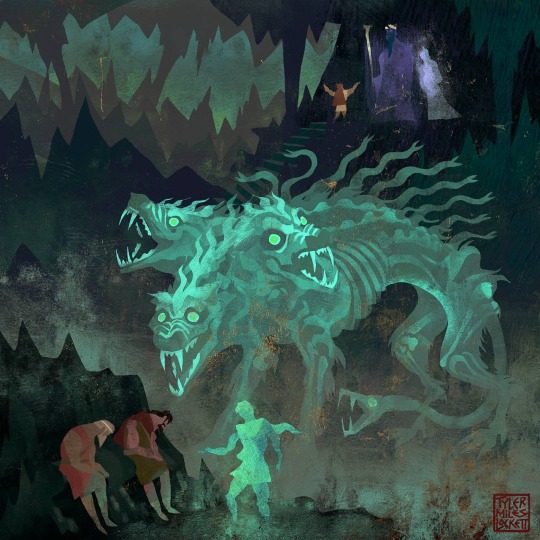





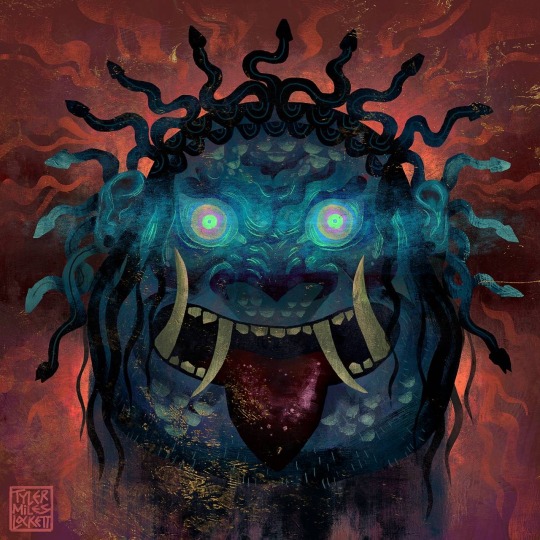
Monsters of Greek mythology
The Furies, or Erinyes, were relentless avengers of wrongdoing in Greek mythology.
Typhon, the deadliest monster in Greek mythology, challenged the gods of Olympus with his serpent-headed fury and storm-creating powers.
Hekate, the enigmatic goddess of magic and crossroads, held sway over the night and the spirit world.
Echidna, the mother of monsters, was a creature that gave birth to numerous legendary beasts.
Cerberus, the three-headed dog, guarded the gates of the Underworld, preventing both entry and escape.
The Greae, three ancient sisters who shared one eye and one tooth, were known for their wisdom and appeared in the myth of Perseus.
Cetus, a sea monster sent to ravage Ethiopia, was defeated by the hero Perseus.
The Minotaur, a half-man, half-bull creature, dwelled in the labyrinth on Crete and was vanquished by Theseus.
The Hydra, a multi-headed serpent-like monster, grew more heads when one was severed and was slain by Hercules.
Medusa, a Gorgon with snakes for hair, could turn onlookers to stone and met her demise at the hands of Perseus, who used her head as a weapon.
Support my book kickstarter "Lockett Illustrated: Greek Gods and Heroes" coming in early 2024.
My self-published book on KICKSTARTER
Linktree:https://tr.ee/DcjSQDSEv3
#pagan#hellenism#greek mythology#tagamemnon#mythology tag#percyjackson#dark academia#greek#greekmyths#classical literature#percy jackon and the olympians#pjo#homer#iliad#classics#mythologyart#art#artists on tumblr#odyssey#literature#ancientworld#ancienthistory#ancient civilizations#ancientgreece#olympians#greekgods#agamemnon#troy#trojanwar
493 notes
·
View notes
Note
Round three of death by Snu Snu with boyfriend master wearing I want GF to sit on my face with Penthasalia, Caenis, Medea, Medusa and Atalante( berserker) if you can do her. As a treat you can also sneak Gorgon in if you want

You have chosen death.
She is going to make you see stars.
She may also make you pass out from a lack of oxygen.
Penthesilea can get pretty… excited.
Especially in an environment that has emotions running high.
To put it simply.
You may be walking into that room on your own two legs.
But you either won’t be coming out for a few days, or you will be rushed out and put in a full body cast.
The more likely of the two is the second one.
Again, she tends to get excited…
If it makes you feel better, she’ll be by your bedside the entire time you're recovering.

Caenis is not someone who flusters easily.
However…
Even she has her limits…
One of those is you proudly walking around in that shirt.
How could you be so shameless while wearing it?
She felt like she was going to self combust out of embarrassment!
She had already decided she was going to be teaching you a lesson when she first saw it.
However, her idea on what lesson she was going to teach you…
Well, that got less and less like a punishment as the day went on.
If anything, it got more and more debauched.
Then again, Caenis isn’t known for holding back.

She was going to explode.
How?
How did you wear something so… so… so…
HOW!?
The poor lady was red as a tomato while looking at you.
The entire time, fighting off impure, unmaidenly thoughts about what she and you could get up to.
She was going to give you a piece of her mind by the end of the day.
If she didn’t vaporize first.
If she doesn’t, you will be in for a lecture.
This will be followed by perhaps the longest and most insane night you have ever lived through.
You… may also want to hide the shirt before she burns it.

Medusa will have two very different reactions to the shirt that will depend on the environment she is in.
If she is alone with you, she’ll tease you for a bit before giving you what you want until you tap out, or she does.
If her sisters are around however…
She will be scrambling to shove you into whatever she can to hide you from them.
In small part because of the shirt, yes.
But also, because you were hers and hers alone.
Also, if they saw the shirt you were wearing she would be teased about it until the heat death of the universe.
Though, if she got to keep you, it would be bearable.
However, you would have to be her… chew toy for lack of a better term.
Something tells her you wouldn’t mind that.
And she wouldn’t either.

You are in immense danger and only have two options left for you to take.
The first option is to ditch the shirt and hide until Atalante cools off in… eight centuries.
The second, is to accept your fate, write a last will and testament, settle all earthly affairs, and ready yourself for execution.
If you take the second option, she is going to tear you apart.
Once she is done with you, your soul will have left your body and your body will be in desperate need of either healing, or a funeral service.
Do not wear the shirt around her.
Seriously.
DO!
NOT!
If you do, you are either extremely brave, or extremely stupid.
#penthesilea#medea#caenis#medusa#Atalante berserker#penthesilea x reader#meda x reader#caenis x reader#medusa x reader
57 notes
·
View notes
Text
They're really pulling some niche figures for these new Personas, huh?
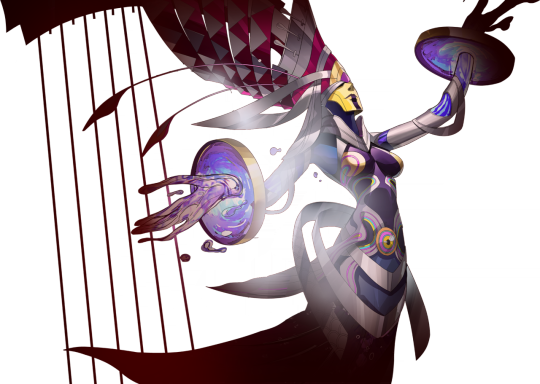
Prosymna is one of three naiad daughters of the Greek river god Asterion. Along with her sisters (Acraea and Euboea), she served as a wet-nurse for Hera. The name Prosymna means "celebrate in song," which explains her harp-like design.
(Prosymna is also a genus of snake!)

Erytheia is one of the three (or four, or seven) Hesperides, nymphs who presided over evening and sunsets. The name Erytheia means "the red one." There doesn't seem to be much mythos surrounding Erytheia specifically, but her name was assigned to a small island northwest of Gilbraltar. (Nowadays it's part of Spain! The city of Cadíz can be found there.)
Preceded by Leucothea, Erytheia is one of the two (possibly 3?) P5X Persona to be rendered as a masculine entity despite being based off a distinctly feminine mythological figure. Not sure why they're doing that, but hey, the designs are great!
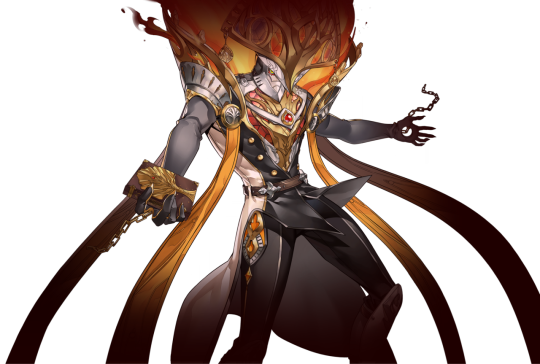
Syke is a bit of an oddball. While it would be easy to presume it's meant to represent Psyche, the Greek goddess of the soul…Psyche has already appeared as Metis' Persona back in P3 FES, so it's possible this one is a different entity. However, something worth noting: like the other Greek myth Persona in this post, Psyche came in a set of three, having been the youngest of three sisters.
Of what I've been able to dig up, Syke (or Syca) was also the name of a town in ancient Cilicia, a region in southern Anatolia. Another name for Syke was Setos, possibly based off the primordial sea goddess Ceto. Ceto is considered one of the oldest-known deities in Greek myth, and was mother to a myriad of monsters, such as the Graiae and Gorgon sisters.

Meng Po is the Chinese goddess of forgetfulness, tasked with ensuring that souls headed for reincarnation are reborn with no memories. To accomplish this, she serves a memory-wiping soup to souls crossing the Naihe Bridge out of Diyu, a subterranean maze that serves as an equivalent to hell in Chinese mythology.
This lore explains both the bowl and lantern in this Persona's design. The bowl represents the soup, obviously enough, while the lantern can be interpreted as symbolic of "guiding the dead."

Cleodora was one of the three Thriae, prophetic nymphs who lived in the Corycian Cave of Mt. Parnassus. Though the Thriae are often considered to be the "bee-maidens" (women bearing human heads/torsos and bee wings/lower bodies) described in the Homeric Hymn to Hermes, it's possible they're different trios; the Thriae predicted the future through throwing stones (pessomancy/mantic pebbles), while the bee-maidens predicted the future through casting lots (cleromancy).
The only info I can find on Cleodora as separate from the Thriae states that she was the mother of Parnassos, who invented a way to predict the future based on birds (ornithomancy).
#persona 5 x#p5x#persona 5 the phantom x#prosymna#erytheia#syke#meng po#cleodora#Kidd speaking#not aesthetic
199 notes
·
View notes
Text

Medusa Spitblossoms Medusa: A Mythological Tale of Maiden to Monstrosity
Medusa, a name that evokes both fascination and terror, is one of the most intriguing figures in Greek mythology. This captivating Gorgon, known for her hair of serpents and the ability to turn mortals into stone, has been the subject of countless artistic interpretations, symbolizing power, femininity, and the complex nature of humanity. Although Medusa is not considered a goddess, she is an important and unique character from Greek mythology, specifically one of the Gorgons, three sisters known for their monstrous appearance.
While Medusa is a notable figure in Greek mythology and has been the subject of various artistic interpretations and symbolism, she is not worshipped as a goddess in the traditional sense. Over time, Medusa myth has been used as a symbol to protect and ward off the negative, representing a dangerous threat meant to deter other dangerous threats, an image of evil to repel evil. In this blog post, we will delve into the myth of Medusa and explore the profound symbolism associated with her enigmatic persona.
Medusa, a name that evokes both fascination and terror, is one of the most intriguing figures in Greek mythology. This captivating Gorgon, known for her hair of serpents and the ability to turn mortals into stone, has been the subject of countless artistic interpretations, symbolizing power, femininity, and the complex nature of humanity. Although Medusa is not considered a goddess, she is an important and unique character from Greek mythology, specifically one of the Gorgons, three sisters known for their monstrous appearance.
While Medusa is a notable figure in Greek mythology and has been the subject of various artistic interpretations and symbolism, she is not worshipped as a goddess in the traditional sense. Over time, Medusa myth has been used as a symbol to protect and ward off the negative, representing a dangerous threat meant to deter other dangerous threats, an image of evil to repel evil. In this blog post, we will delve into the myth of Medusa and explore the profound symbolism associated with her enigmatic persona.
The Mythical Origins of Medusa:
Medusa Greek mythology was once a beautiful mortal woman with flowing hair. However, due to a series of unfortunate events, she was cursed by the goddess Athena, transforming her into a monstrous creature. Her once luscious locks were replaced by serpents, and her gaze became the deadly weapon that turned any who looked upon her to stone. This tale of transformation and divine punishment carries deep symbolic meaning, resonating with themes of beauty, envy, and the consequences of hubris.
Medusa Spiritual Meaning:
While Medusa mythology is often depicted as a terrifying monster, she also embodies a potent symbol of feminine power. Her serpentine hair represents primordial wisdom, connected to the chthonic forces of nature and the untamed aspects of femininity. Medusa challenges traditional notions of beauty and subverts the male gaze, offering an alternative archetype of strength and resilience for women throughout history. In modern times, she has become an icon for female empowerment, encouraging women to embrace their unique qualities and reclaim their narrative.
Medusa in Art and Literature:
Throughout the ages, artists and writers have been captivated by Medusa's enigmatic allure, immortalizing her in various forms. From ancient Greek pottery to Renaissance paintings and contemporary sculptures, Medusa's image continues to inspire creative interpretations. Notable works such as Caravaggio's "Medusa" and Bernini's "Medusa Shield" showcase the enduring fascination with this mythological figure. Furthermore, Medusa's presence in literature, from Ovid's "Metamorphoses" to contemporary novels, reflects her enduring relevance as a complex symbol of power, desire, and the human condition.
Medusa as a Metaphor for the Human Psyche:
Medusa symbolism as a figure of feminine power, Medusa also represents the intricate workings of the human psyche. The concept of "petrification" associated with her gaze can be interpreted as the fear of facing our deepest fears and desires, the paralysis that comes with inaction, or the consequences of avoiding self-reflection. Medusa reminds us that embracing and integrating our shadow selves is a crucial step towards personal growth and self-actualization.
Medusa and Poseidon
Medusa greek mythology was described as a beautiful mortal woman before she was cursed. She was said to have flowing golden or auburn hair, which was considered her most striking feature. Her beauty was so captivating that she caught the attention of various suitors and even garnered the interest of the sea god Poseidon.
However, after an encounter with Poseidon in the temple of Athena, Medusa's fate took a tragic turn. According to the myth, Poseidon raped Medusa within the temple of Athena, defiling the sacred space. As a result of this violation, Athena punished Medusa rather than Poseidon. The enraged Athena cursed Medusa, transforming her appearance into a grotesque form to punish her. Her beautiful hair was turned into serpents, her eyes became glowing and petrifying, and her once attractive countenance became monstrous.
It's important to note that descriptions of Medusa's appearance can vary in different interpretations and artistic depictions. Artists and storytellers throughout history have depicted Medusa in various ways, emphasizing different aspects of her monstrous transformation. However, the common thread in the myth is that she was initially a beautiful woman who was tragically transformed into a horrifying creature as a result of a curse bestowed upon her.
Perseus and Medusa
The story of Medusa and Perseus is a well-known tale in Greek mythology. It involves the hero Perseus and his quest to slay the monstrous Gorgon Medusa.
Perseus was the son of Zeus, the king of the gods, and Danaë, a mortal woman. When Perseus was a baby, an oracle prophesied that he would one day kill his grandfather, Acrisius. To prevent this, Acrisius locked Danaë and Perseus in a chest and cast them into the sea. They were eventually rescued by a fisherman and brought to the island of Seriphos, where they lived.
As Perseus grew older, King Polydectes of Seriphos became infatuated with Danaë and desired to marry her. Perseus, reluctant to see his mother wedded to the king, accepted a dangerous task proposed by Polydectes. The king requested the head of Medusa, the only mortal Gorgon, as a gift from Perseus.
The Gorgons, Medusa included, were monstrous creatures with snakes for hair and the power to turn people to stone with their gaze. Medusa, in particular, possessed this petrifying ability. To aid him in his quest, Perseus received various gifts from the gods, including a reflective shield from Athena, winged sandals from Hermes, and a helm of invisibility from Hades.
Using these divine gifts, Perseus embarked on his journey. He managed to find the three Gorgons, including Medusa, in their lair. Avoiding direct eye contact with Medusa, he used his shield as a mirror to observe her without turning to stone. With a swift strike, Perseus beheaded Medusa while she slept. The winged horse Pegasus and the giant Chrysaor, both born from Medusa's blood, emerged from her severed neck.
On his way back, Perseus encountered various adventures, including rescuing Andromeda, a princess, from a sea monster. Eventually, he returned to Seriphos and used Medusa's head as a weapon against his enemies. In one incident, he petrified King Polydectes and his court, avenging his mother's mistreatment.
Perseus later reunited with his grandfather, Acrisius. However, the prophecy came true when Perseus accidentally killed Acrisius during a discus-throwing contest. As a result, Perseus fulfilled the prophecy, but his heroic feats brought him renown and established his place in Greek mythology.
The myth of Medusa and Perseus is often seen as a tale of heroism, triumph over monstrous forces, and the fulfillment of prophecies. It showcases Perseus' courage, resourcefulness, and divine assistance in his quest to slay Medusa and the subsequent events that unfolded as a result.
Medusa's Children
According to Greek mythology, Medusa goddess did have offspring. After Perseus, the hero who beheaded Medusa, two creatures emerged from her severed neck: Pegasus and Chrysaor.
Pegasus was a winged horse known for his incredible speed and association with poetry and inspiration. He became a famous mythological figure in his own right and was tamed by the hero Bellerophon, who rode him on various adventures.
Chrysaor, on the other hand, was a giant or a warrior with a golden sword. His name translates to "Golden Blade." Chrysaor is not as widely known or featured in mythology as Pegasus, but he is often mentioned as the sibling of the winged horse.
It's important to note that Medusa's offspring were not conceived in the traditional sense but were born from her blood or the remnants of her body after her death. They played significant roles in subsequent mythological narratives and were seen as the legacy of Medusa, carrying aspects of her power and essence.
Was Medusa Immortal?
In Greek mythology, Medusa was not immortal. Like many other figures in Greek mythology, she was a mortal who possessed certain abilities and encountered divine beings. Medusa was originally a beautiful mortal woman, but due to a curse placed upon her by the goddess Athena, she was transformed into a monstrous creature with snakes for hair and the ability to turn people to stone with her gaze.
Medusa's immortality, or lack thereof, can be interpreted differently depending on the version of the myth. Some sources suggest that she was mortal and eventually slain by the hero Perseus, who used a mirror-like shield to avoid looking directly at her and beheaded her while she slept. In this interpretation, Medusa's death implies that she was not immortal.
However, other versions of the myth propose that Medusa, along with her sisters, possessed a degree of immortality. They were depicted as beings who could not be killed conventionally due to their monstrous nature. Their immortality was tied to their monstrous form, which persisted despite any injuries inflicted upon them. It was only through a specific act, such as Perseus using his reflective shield to decapitate her, that Medusa could be defeated.
Overall, the concept of Medusa's immortality can vary depending on the interpretation of the myth. In some versions, she was mortal and eventually slain, while in others, she possessed a form of immortality that required a specific method of defeating her.
Is Medusa a Goddess?
Medusa is not a goddess; she's a figure from Greek mythology. She was originally a beautiful woman turned into a Gorgon with snakes for hair. Medusa is often associated with her petrifying gaze.
What Does Medusa Symbolize?
The Medusa meaning is multifaceted and can be interpreted through various lenses, including mythology, psychology, and symbolism. Here are a few key aspects of the meaning associated with Medusa:
What Does Medusa Represent?
Transformation and Metamorphosis: Medusa's story revolves around a significant transformation. She was once a beautiful mortal woman who, due to a curse, became a grotesque figure with snakes for hair and the power to turn people to stone. Her tale represents the concept of metamorphosis, both physically and symbolically. It reflects the potential for profound changes in one's life and the transformative power that lies within.
Complexity and Duality: Medusa embodies the complexity and duality of human nature. On one hand, she is depicted as a monstrous figure capable of petrifying others. On the other hand, she was once a beautiful woman who faced unjust punishment. This duality reflects the intricate nature of humanity, showcasing how individuals can possess both light and dark aspects within themselves.
Reflection and Self-Exploration: Medusa's gaze, which turned people to stone, can be seen as a metaphor for self-reflection and the consequences of avoiding or denying one's own truth. Medusa prompts individuals to confront their inner fears, desires, and shadows. Her story encourages deep introspection, acceptance, and the integration of all aspects of oneself.
Archetypal and Symbolic Representation: Medusa has become an archetypal figure, representing various themes and symbols. These include femininity, power dynamics, wisdom, protection, transformation, and the embodiment of the wild and untamed forces of nature. Her symbolism transcends time and continues to resonate with individuals seeking to understand and express different facets of the human experience.
Medusa in Modern Witchcraft
Medusa's role in witchcraft varies depending on the specific tradition or belief system being explored. It's important to note that Medusa herself is a figure from Greek mythology, while witchcraft encompasses a wide range of practices and beliefs that can be found in different cultures throughout history.
In some modern forms of witchcraft, Medusa energy may be invoked or revered as a symbol of feminine power, transformation, and protection. She is seen as a representation of the wild, untamed aspects of nature and the feminine divine. Some witches may draw inspiration from her story to connect with their own inner strength, resilience, and the ability to face challenges.
In certain magical practices, Medusa's image or symbolism might be incorporated into rituals, spells, or charms for specific purposes. For example, her serpentine hair might be seen as a potent symbol for the awakening of kundalini energy or as a representation of the transformative power of the serpent archetype.
It's essential to recognize that witchcraft is a diverse and multifaceted spiritual path, and individuals or groups within witchcraft traditions may interpret and incorporate Medusa's symbolism differently. Medusa's role in witchcraft is often subjective and open to personal interpretation, reflecting the practitioner's unique beliefs and intentions.
27 notes
·
View notes
Text
Algol and Perseus
The rescuer and the demon
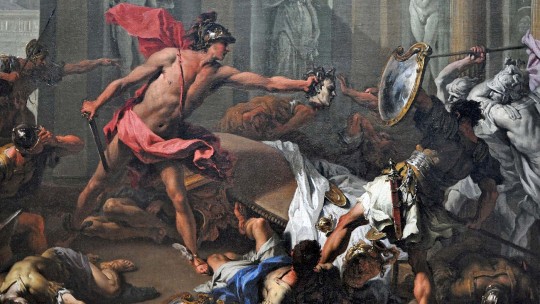

Sebastiano Ricci Antonio Canova
Algol is the beta star of the constellation Perseus, currently sitting at 26° Taurus, known as “the demon star” or "blinking demon", its name comes from the arabic Al Ghul meaning "the demon". To hellenistic astrology it represents Medusa’s head, which Perseus holds on one hand, while on the other he has his sword. An important characteristic of Algol is that its glow has a regular variation, it loses half of its brightness for hours and then it gains back. It was believed by astrologers to be an eclipsing star, which means that another non-visible body would be orbiting it and therefore eclipsing its light from time to time. They were half right, because it was later discovered to be an eclipsing star system, and that Algol was actually 3 stars, just like the Gorgon sisters are three: the imortals Stheno and Euryale, and the mortal Medusa. This is such a hallmark of Algol that it gave its name to its class of eclipsing variable: Algol variable.
Eclipses are associated with death, basically because light in astrology is life-giving, and loss of light is death. But it’s interesting that it's frequently associated with the "demonic", capital punishment and decapitation. Algol is telling a story about the decapitation of a “demon”, just like the lunar nodes (Rahu and Ketu) do in the Jyotish tradition when they cause eclipses. Ptolemy only tells us that the constellation of Perseus is like Jupiter and Saturn. Although Robson agrees with Agrippa about Algol specifically being of the nature of Saturn-Jupiter, and “the most evil star in the heavens”, causing a lot of fear whenever we see it activated in a chart. But I’m not here to scare anybody, don’t worry. It’s difficult, but I’ll try to lighten this up, because the most overlooked fact about Algol is that it also protects and can make revolutions and revolutionary heros.
"Perseus is like Jupiter and Saturn: but the nebula, in the hilt of the sword, is like Mars and Mercury." (Ptolemy - Tetrabiblos) "It causes misfortune, violence, decapitation, hanging, electrocution and mob violence, and gives a dogged and violent nature that causes death to the native or others. It is the most evil star in the heavens" (Vivian E. Robson - The Fixed Stars and Constellations in Astrology)


Illustrations from Al-Sūfī's book of fixed stars
Eletrocution or electrical problems are an issue with eclipses and apparently also eclipsing star-systems like Algol. This is noted by Christopher Warnock about his Algol talismans:
"I have had multiple reports and have myself experienced Algol’s tendency to cause electrical and electronic interference when the talisman is first used. I mysteriously lost my Internet connection for an hour and my electronic thermostat died. One user had his entire block lose power. Less frequently but still regularly clients have reported that while wearing their Algol talisman, “weird” or “freaky” people took one look at them and fled." (Christopher Warnock - Fixed star, Sign and Constellation Magic)
Other one of its proeminent themes is vengeance, or the dichotomy of justice vs vengeance, but the effect of reflecting back evil that's sent towards its direction, or of ending curses describes it better in my opinion. About the images of the fixed Behenian stars, Agrippa says that:
“Under Caput Algol, they made an image whose figure was the head of a man with a long beard, having a bloody neck. This brought the good outcome of petitions, gave the bearer boldness and nobility, preserved members of the body from injury, helped against sorceries, and reflected evil attempts and evil incantations from enemies”. (Agrippa's Three Books of Occult Philosophy - Eric Purdue's translation)

Piero di Cosimo
This protection side of the star is illustrated by the story of the champion Perseus not just decapitating the demon but using its head to free Andromeda from her chains and saving her and her city from another monster, and then Athena herself starts using the head of Medusa as a symbol on her shield. As established, this is a star of the nature of Jupiter and Saturn. The nature of Saturn is evidenced even by the names given to the star: demon, cacodaemon, which is also the greek name for the 12th house. Imprisonment, monstruosity and madness are clearly the most important Saturn and 12th house themes. But Algol is a protective star, particularly in astrological magic, although I'll show how this kinda manifests in nativities as well. Algol is mainly of a jupiterian nature, that's why it does liberates. The head is an evil daemon but also a protection amulet. This is interesting regarding the eclipsing factor and the similarity of the significations with the Jyotish Rahu and Ketu. In western astrology the nodes are considered to have effects like Jupiter and Saturn, and the topic of imprisonment-liberation is explored in the dynamic of the two*.
With the new interpretations of the Medusa myth, some astrologers say that Algol can be about "female rage" or "dark feminine", or "feminine jealousy" etc. I think this is one of the stories that people mix the astrological meaning with the morality of the greek myth associated with the star the most. The greek myth is not really the star and the star is not the greek myth. In my opinion, you always must take into consideration that some things can be just the way the greeks or romans viewed a certain theme, and of course they would put a violated woman to represent a monster on a mindless vendetta, and it's not meant to be complimentary. I believe that's already way beyond Algol's effects, it could be just their misogyny projected onto the stars. I can think of examples where I can see that kind of story taking place, but that doesn’t mean that the star is about those things, but just that this is one possibility because we live in patriarchy and things around women's issues can get ugly in an Algol manner. The star can be about capital punishment, monstruosity, madness, captivity, violation, injustice, vengeance, evil daemonic influences etc, but it's not really about cishet women. So, even though I’m also using the greek myth here, I’m not giving the most importance to the detail that it is a story about a woman receiving unfair punishment and that there's a lack of comradery between women, because I'm interested in the star beyond what greeks and romans said, because the stars can’t be represented by just one hegemonic narrative. A lot of other cultures had their different stories about Algol, the Medusa one isn’t special to the point that we could assume every detail about it, even its moral issues (which are also in this case suffering a bit from anachronism), has meaning for the star associated.
Perseus is a spring time constellation very near the bull (taurus), and that may sound too nice for such a scary one. But in babylonian astrology, the stars of Perseus actually formed the constellation of the Old Man, who also held a decapitated head and a rod instead of a sword. Of it, Gavin White has an interesting perspective to share:
“At this time of natural abundance, the earth was thought to ‘open up’ in order to yield her bounty, but to the archaic mind this opening up was accompanied by a host of dangers, chief of which was the potential pollution from the dead who could gain easy access to the upper worlds at this pivotal time. In light of this belief, I would suggest that the Old Man, with his wand and prophylactic head, is banishing the ghosts of the old year and driving them back to the underworld.”

Illutration from Gavin White's Babylonian Star-Lore
There's a lot of examples of charts for literal decapitation or capital punishment, injuries to the head or neck area as obvious manifestations of the star: The most famous is probably the catholic Saint George, who is said to have been executed by decapitation on April 23 back when that was the time of year when the Sun would conjunct Algol, and he later became associated with the constellation. Back then, Algol was at 2° Taurus. Gianni Versace, who had Algol on the descendant, famously made Medusa the logo of his brand and also died with a bullet to the head. Freud had Mercury with Algol, his 8th house ruler, and he died with throat cancer. Nick Yarris, who spent two decades on death row after he was wrongfully convicted of murder, has the Sun with Algol. Patrick Henry had Jupiter, and he was a murderer whose case influenced the abolition of the death penalty in France, which was done by the method of guillotine until its abolition. He was defended by Robert Badinter, who was an activist against the death penalty and could sucessfully propose its abolition in 1981. Badinter has Jupiter with the alpha of Andromeda in the first house. France has a thing with decapitation, some of the charts for its republics have either Algol or Mirfak activated, the alpha star of Perseus.
Algol and Madness
But I want to talk about Algol's special relationship with madness, in the demonized/criminalized sense, because after all, "the demon" is unwanted, it frequently represents the marginalized and their opression. In Brazil's history, especially during the military dictatorship organized and imposed by usamerican capitalist imperialism, asylums imprisoned and tortured mainly black people, women and queer people. Some asylums got so overwhelmed that they became concentration camps, like the famous case of Hospital Colônia in Barbacena, known as the Brazilian Holocaust case, where people died by the thousands from starvation, hypothermia, anemia, STI's, untreated diseases from the lack of hygiene etc. Some important psychiatrists, psychologists, psychoanalysts have Algol activated by some planet. Freud has Mercury, Fritz Perls has Jupiter, David Healy, who literally has a book titled "The Decapitation of Care", has Venus. But what's more interesting to me is the protection element of Algol in some cases and its role in mad liberation movements, after all, Perseus is a liberator. Algol shows up in very important people in the pysch field who question medical power and have antipsych views, and on important events of the psychiatric reform.



Hospital Colônia de Barbacena - MG
Franco Basaglia, the main responsible for the dismantling of psychiatric hospitals and for the psychiatric reform in Italy and for inspiring the one in Brazil, had the Moon with Algol in the 10th house, representing his deeds, while ruling the 12th. In Italy, the Law 180 (Basaglia Law), the Psychiatric Reform law that determined the progressive extinction of asylums throughout the italian territory, was sanctioned with the Sun on Algol. In Brazil, on May 18, 1987, the exact day of the year that the Sun conjuncts Algol, a meeting of mental health workers at a conference was the major milestone for Brazilian health reform and the anti-asylum movement. And since that event, May 18th has become our national anti-asylum movement day, and it becomes more and more culturally relevant as a day to discuss psychiatric reform and the fight to guarantee the rights and autonomy of mental patients.



Marches on May 18th
An important activist, Austregésilo Bueno, born with the Sun with Algol, survivor of compulsory hospitalization in asylums in the 70s, wrote a book "Canto dos Malditos" about his horrible experiences as a psychiatric patient treated with eletroshock therapy (another one of Algol's effects). He had his book adapted to film and his story played by the actor Rodrigo Santoro, who has Algol on the Ascendant. The name of the film is Brainstorm in English, but I find the original "Bicho de Sete Cabeças" much more compelling. It's a truly devastating story, and it's the story of thousands unfortunately.
One thing about Saturn and madness is the recurring idea of wearing masks. Masks and theatre have always been associated with Saturn. Saturnalia was a roman festival where all the roles switched, where kings pretended to be fools and fools pretended to be kings. In modern astrology Saturn ended up associated a lot with a raw and harsh reality, disregarding the most mystical and unreal characteristics of Saturn that have always been present. Although life, reality, identity and reason are always a performance, we're always wearing a mask and performing life. There's a point in the movie "Bicho de Sete Cabeças" when the protagonist is having a difficult time on his first days of being an inmate, he's fighting too much against the forced treatment and expressing too much unsatisfaction with his imprisonment, thus getting even more forcebly medicated and punished by the staff. At this point one of the older inmates shares an important advice with him:
"You have to pretend, who in this world doesn't pretend? You have to say that you're in a good mood, you have to say that you're not hungry, you have to say that you don't have a toothache, you have to say that you're not afraid, otherwise you can't do it, you can't do it. No doctor ever told me that hunger and poverty can lead to mental disorders, but those who don't eat become nervous, those who don't eat and see their family go without eating can go crazy, a discontentment can lead to madness, a death in the family, the abandonment of the great love. We even need to pretend to be insane when we're insane, pretend to be a poet when we're a poet."
It's a powerful speech about the farce of medicine's ownership over the subject of madness, the farce of reason and that it must subjugate or dominate madness. Pretending and acting out the platonic ideal behavior at all situations under all circumstances, as if it's normal, that's the only way anyone is seen as sane.



Bicho de Sete Cabeças (2000)
Another important date in brazillian history is the 13th of May 1888, the day of the passing of the law that abolished slavery, which also had Algol activated by the Sun. This was obviously not the definite end of slavery and not the end of the struggle of black brazilians, just like the Basaglia Law didn't mean mad liberation, but I'm just demonstrating how powerful Algol is to protect from evil and put an end to injustice in an official and legislative manner. Like Saint George defeating the dragon, Perseus defeats a monster that is impossible to defeat, the "impossible victory" and liberation is recurrent in the stories linked to it. Systemic opression and injustices a lot of times seem like impossible problems, it becomes harder and harder to imagine a world where they don't exist, but Algol events revolutionize the impossible.
"The important thing is that we have proven that the impossible becomes possible. Ten, fifteen, twenty years ago it was unthinkable that a mental hospital could be destroyed. Maybe mental hospitals will return to being closed and more closed than before, I don't know, but in any case we have demonstrated that the mad can be cared for in another way, and testimony is fundamental. I don't think that the fact that an action manages to energize itself means that it has been won. The important point is another, it is that now we know what can be done." (Franco Basaglia - Conferenze brasiliane)
An important honorable mention should be made to Carlos Marighella, a guerrilheiro in the resistance of the brazilian military dictatorship who was executed before he could see our democratization. He had Mars with Algol.
"The urban guerrilheiro is an implacable enemy of the government and inflicts systematic harm on authorities and men who dominate and exercise power. The main work of the urban guerrilheiro is to distract, tire and demoralize the military, the military dictatorship and repressive forces, and also attack and destroy the wealth of north americans, foreign managers, and the Brazilian upper class. But the fundamental and decisive characteristic of the urban guerrilheiro is that he is a man who fights with weapons; given this condition, there is little chance that he will be able to pursue his normal profession for a long time or the reference of the class struggle, since it is inevitable and necessarily expected, the armed conflict of urban guerrilla against the essential objectives: A. The physical extermination of the leaders and assistants of the armed forces and the police. B. The expropriation of government resources and those who belong to the big capitalists, landowners, and imperialists, with small expropriations used to maintain the individual urban guerrilheiro and large expropriations for the support of the same revolution. (Carlos Marighella - Manual do Guerrilheiro Urbano)
Algol in Cannes
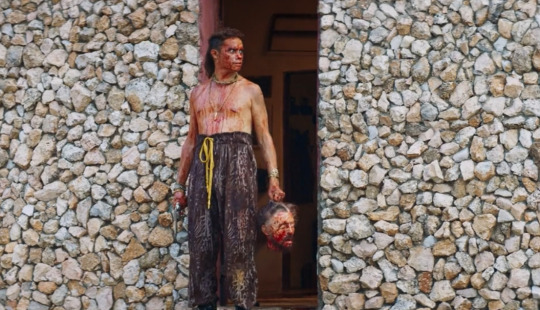
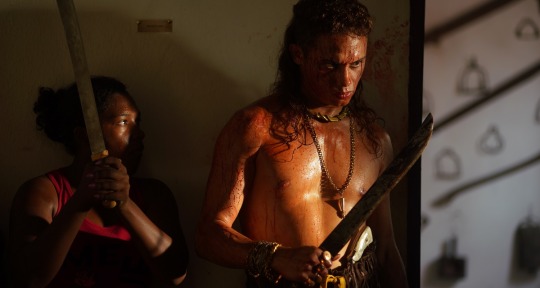
Lunga in Bacurau (2019), the first queer Perseus I know. The actor Silvero Pereira has Venus on Algol.
I’ve said here before how much I love Bacurau. The movie premiered in Cannes, on May 15, 2019, at 10 pm**. This is a chart full of fixed stars, with the Sun with Algol in the 6th house. You'll find in the film the Algol classic of extreme injustice being overcome. But one curious thing is that the Cannes Film Festival always happens around the same time of year when the Sun is at the last degrees of Taurus and beginning of Gemini, making a lot of the movies premiered at Cannes have Algol activated. And it shows. It’s a great opportunity to watch how varied the Algol themes can be. On that same year of 2019, they had: THE DEAD DON’T DIE by JIM JARMUSCH, a pretty obvious Algol movie about zombies, whom you defeat by cutting off the head, of course; LES MISÉRABLES by LADJ LY, inspired by a real-life event of police violence that inspired the 2005 riots in Paris, it seems to have a very radicalized discourse about raging against violent injustices; ATLANTIQUE (ATLANTICS) by MATI DIOP has dead unpaid workers coming back as spirits possessing their city’s inhabitants to take vengeance on the tycoon who withheld their payment; LITTLE JOE by JESSICA HAUSNER is a film about a lab created flower that alters people's behavior in strange ways, and these last two kinda have the feeling of that "spring danger" Gavin White talks about. DOLOR Y GLORIA (PAIN AND GLORY) by PEDRO ALMODÓVAR has Antonio Banderas as the protagonist who develops dysphagia, caused by a caucified growth in his neck. Etc. And these are all just some of the 2019 films. I haven't watched most of them, but you can always look for the films which had their first screenings around 14-20 of May and they'll be rich in Algol content.
So, I'll leave you with that: a bunch of movie recommendations. Thank you for reading.
--
*Adam Elenbaas has my favorite content on the subject of the nodes or Rahu-Ketu.
** You can research the screening guide for an edition to find the time.
#algol#hellenistic astrology#traditional astrology#perseus#mirfak#fixed stars#taurus#taurus sun#taurus moon#taurus asc#sun with algol#astrology#astrology readings#agrippa#ptolemy#astrological magic#astro magic#andromeda#medusa#12th house#saturn#cacodaemon
97 notes
·
View notes
Text
31 DAYS OF HELPOL: Day Twenty-Seven, Twenty-Eight, Twenty-Nine, Thirty, and Thirty One
We made it to the end of the year! Thank you to everyone who participated in this event with me, it means a lot that it got so big
Share a fun fact about one or more of your deities which you think is underrated or not well-known
Athena invented the flute! Or an instrument similar to it. She invented it to mimic the sound of the gorgon’s mourning cries over Medusa, and when She played it on Olympus She was mocked by Hera and Aphrodite for the way it made Her face look when She played it. Athena threw it out of Olympus and it was found by a man who claimed credit for its creation.
What is your favourite myth?
The one of Tiresias’s gender, where he came across two mating snakes and hit them with a stick. Then, for disturbing them, Hera punished him by turning him into a woman. As a woman, Tiresias actually lived a fulfilling life. She got married and had a few children. But she came across two mating snakes again in the future and left them alone, so Hera returned her to being a male. Later, Hera and Zeus were arguing about whether males or females enjoyed sex more and She decided to ask Tiresias since he’d lived as both. Tiresias said that women enjoy it more, which was also what Zeus believed. Doe edging on the myth, siding with Zeus over Hera is what lead to Tiresias being blinded in some versions.
What is an aspect of your deities you really appreciate?
I won’t do the heroes, just the deities.
I appreciate Athena’s closeness. I think it comes from Her patron of heroes aspect and the mentoring side of Her, but I just feel so protected by Her.
For Ares it would be His fatherliness. I’ve cried to Him before. I feel safe with Him.
For Aphrodite, I appreciate the self-care aspects and the way that after giving Her an offering, I just like myself a little bit more the next time I look in the mirror.
And with Melinoë, it’s that my personal experience with Her is very tied to self-reflection and that growth is really important to me. Also, Her playlist helps me sleep quite often. Which is ironic for a goddess with domain over nightmares.
Do you have any visual interpretations of your dieties? Is this different from usual depictions of them?
The only one of my deities or heroes I can visualise is Tiresias, which is ironic. I have three different visual interpretations of him that kind of fit across the gender spectrum, however they are specifically related to images of Him that I’ve previously seen, so it isn’t different to usual depictions.
Share a positive experience you’ve had this month/year with one or more of your deities
Putting my Odysseus Playlist on shuffle to almost let him choose the music, and the first like.. eight songs that played being ones I added because they reminded me of Telemachus. That was really sweet!
Also, nor with a deity or a hero specifically, but just watching my sister get into the religion and her helping me make altars, asking a bunch of questions and making a few offerings.
#hellenic polytheism#hellenic deity worship#hero worship#athena#tiresias#odysseus#31 days of helpol#day 27#day 28#day 29#day 30#day 31#december#2024
12 notes
·
View notes
Text
Some info that might interest you, taken from an article about Medusa by Dimitris Karakostas - from the "Dictionary of Feminine Myths" (or "Female Myths" depending on how you translate) (I wanted to continue my "Myth of" series, but I realize not many people are interested in huge paragraphs so I'll focus on a bullet-list format from now on)
The first time Medusa gets an actual individuality is on Hesiod's Theogony, where she is described as "Medusa with the atrocious fate", one of the three Gorgons. It is the first time we have her proper name, and not just her called as a "Gorgon", and this denotes how unlike her sisters Stheno and Euryale who will forever stay flat and background characters, Medusa will be the only one with a lasting heritage and developed character (while the only mortal of the sisters, it is her who stayed immortal through the art).
In all the other Greek texts, she is usually just a monster or monstrous head whose presence is an ornament or accessory in the tales of other heroes. In The Odyssey (XI), Odysseus and his companions dread the arrival of Gorgo's head, a "dreadful monster" that Persephone sends after them to punish their trespassing - for they are living beings in the realm of the dead. Pindar, in his 12th Pythic, describes the sinister music/melody of the wild Gorgons, and the "chubby-cheeked" or "fair-cheeked" (depending on how you translate) of Medusa, but no mention of Perseus. In Euripides' tragedy Herakles, the Gorgon is described as "daughter of Night, with a hundred noisy vipers", but she is here a metaphorical/comparativ figure tied to a "music of delirium" and the ecstasy caused by a dance. Plato, in his Phaedre tragedy, uses the Gorgons (just like the Pegasuses, in plural) as part of a larger description of all sorts of strange monsters, all "unconceivable": they are beings that mankind's logic or reason cannot reach or even understand.
If we want an actual story for Medusa, not just her appearing as a little detail in stories, our first record is from the first half of the 5th century BCE. Pherecyde of Leros, wrote in the second book of his "Histories", the tale of Perseus defeating Medusa. Pherecyde of Leros was a great scholar of Antiquity who was known to have created an enormous compendium of many of the myths of Greece, a true encyclopedia - unfortunately, most of his work is lost today, we have only fragments preserved. Hopefully, Pherecyde's treatment of the story of Perseus and Medusa was preserved thanks to a scholia of Apollonios of Rhodes. But it should be noted that this story misses two elements that would prevail in later versions: A) there is no tale of a metamorphosis or transformation of Medusa, implying she always was an ugly monster B) There is no record of Perseus delivering or even encountering Andromeda.
These elements come with the second version we have of "Medusa's story": Apollodorus, inspired by Pherecyde's text, wrote his own record of the Medusa story. However the problem here is that we cannot exactly localize in time Apollodorus' story. Study of his writing proved that he was NOT Apollodorus of Athens, but rather a man who lived at a later date, and all we can say is that his "Bibliotheca" was written between the 3rd century BCE and the 3rd century CE. In his version of the story, Perseus does encounter Andromeda, and Medusa is said to have been once beautiful but turned into a monster by Athena - however, here it is said she was transformed as her punishment for her vanity, as she got into a fight with the goddess, claiming she was more beautiful than her.
The most "complete" version we have of the Medusa story is also non-Greek: it is the story told in the fourth book of Ovid's Metamorphosis, a Latin text written between years 2 and 8. Fascinatingly, as with earlier texts, Medusa is not a primary character or focus-character in this text: the story written by Ovid is the one of Perseus, of Andromeda and of Atlas. Medusa appears as a head, first as an object belonging to Perseus, both a trophy and adeadly weapon ; then as a mean of deliverance, setting free from their torments both Andromeda and Atlas. It isn't until the very end of the story that Perseus reveals the backstory of Medusa and the reason why she was transformed into the monster she is now: and this tale, which closes the hero's adventures, changes the reason of the metamorphosis, so that now Athena punished the beautiful Medusa for having sex with Poseidon inside the goddess' temple.
While it seems that Medusa was always just a detail or ornament in other people's story, a side-character in the legend of Perseus and Andromeda, there is another version defended by Karakostas, and first brought forward by Jean-Pierre Vernant: the legend of Perseus and Andromeda is actually the mythical "background", the setting invented to explain why the entire power and character of Medusa, a key element of Greek mythology, is focused in a disembodied head.
Karakostas notes that Medusa is actually "stronger" of a character than Perseus due to this fact: Medusa's powers and intensity, her supreme beauty or abominable ugliness, makes her autonomous, identifiable and memorable on her own. In reverse, Perseus' story is entirely defined by his relationshp to Medusa, how he kills her and what uses he has of her head - Medusa both opens and closes Perseus' story (at least by Ovid's account).
Medusa is the Other. She is Other towards men, because she is the dangerous and threatening female. Yet, she is other towards women, because art depicted her hairy or even bearded. She is other towards humanity, because she is an animal being (snake for hair, bird wings, tusks of a boar, sometimes she appeared as half-woman half-mare). She is also other towards living beings, because her gaze kills and she belongs to the underworld.
Dante, in his "Inferno", reused Homer's apparition of Medusa in the Underworld and highlight the meaning of such appearance: Medusa arrives when the one who visits the Underworld, the realm of the dead, starts being paralyed with fear. Dante, just like Ulysses, dreads Medusa when he arrived far enough/deep enough into Hell that he starts fearing he might never return to the "above", to the world of light. In a sense, Medusa embodies there the despair of living beings in front of an all-destroying, supremeky-ruling death.
It was Freud, through his text "Das Medusenhaupt" (The Head of Meduse) who brought the idea of Medusa as the "phallic mother". His psychanalytic reading of the legend led to an entire symbolism of the Gorgon as a sexual and erotic symbol throughout the 20th century, tied to how the women of the century redefined the norms of sensuality and the relationships between the two genders: the Gorgon bcame the castrating mother, or the castrating woman. Though the irony of it is that, in the texts of Antiquity, Medusa is not at all a motherly figure. Yes she does have children, she births Pegasus and Chrysaor, but it is almost by accident and in the most un-motherly way possible.
21 notes
·
View notes
Text

Medusa
About Her
* is generally described as a woman with living snakes in place of hair; her appearance was so hideous that anyone who looked upon her was turned to stone.(Wiki)
Folklore
-Common: “was one of the three Gorgons, daughters of Phorcys and Ceto, sisters of the Graeae, Echidna, and Ladon – all dreadful and fearsome beasts.”(greekmythology.com)
-Other: “She was initially a beautiful priestess of Athena who was raped by Poseidon in Athena's temple, leading to Athena's punishment of her by turning her into a monstrous Gorgon with snakes for hair and the ability to turn people to stone.”(Wiki)
Habitat
*”an island close to the Island of the Hesperides at the western extremes of the known world”(greeklegendsandmyths.com)
Artwork:Thesonicfan12345(me)
#digital art#drawing#digital drawing#art#greek mythology#greek myth art#greek art#greek monsters#the gorgon#medusa
4 notes
·
View notes
Text
Greek Mythological Creatures:
Siren:
a dangerous creature that lured nearby sailors with their enchanting music and singing voices to shipwreck on the rocky coast of their island
Griffin:
a legendary creature from Egyptian, Mesopotamian, Persian, Minoan, Greek, and Roman mythology that has the body of a lion and the head and wings of an eagle. Since the lion was considered the "King of the Beasts" and the eagle the "King of the Air," the griffin was thought to be an especially powerful and majestic creature with both royal and divine associations
Centaur:
race of creatures that are part human and part horse
Satyr:
a troop of male companions of Pan and Dionysus that roamed the woods and mountains. The word Satire, meaning human follies or mistakes, comes from the word Satyr. Satyrs are described as roguish but faint-hearted folk — subversive and dangerous, yet shy and cowardly. They are also often depicted as fumbling, joking, and careless creatures
Harpies:
a half-human and half-bird personification of storm winds. The harpies were called "the hounds of mighty Zeus" thus "ministers of the Thunderer (Zeus)". Later writers listed the harpies among the guardians of the underworld
Pegasus:
a mythical, winged, divine stallion
Chimera:
a mixed beast from Greek lore whose body typically consists of various bits of a lion, a goat, and a serpent. It is known to breathe fire while the snake portion is venomous
Nymph:
a member of a large class of female lesser nature spirits, typically associated with a particular location or landform. Nymphs reside on mountains, in groves, by springs and rivers, in valleys, and in cool grottoes
Echidna:
described by Hesiod as a female monster spawned in a cave, who mothered with her mate Typhoeus (or Typhon) every major monster in the Greek myths, the goddess fierce Echidna who is half a nymph with glancing eyes and fair cheeks, and half again a huge snake, great and awful, with speckled skin, eating raw flesh beneath the secret parts of the holy earth
Laelaps:
a mythological dog in Greek mythology who never failed to catch his prey. It was a gift from Artemis to Procris, who gave it to her husband Cephalus. He decided to use the hound to hunt the Teumessian fox, a fox that was destined never to be caught.
Gorgon:
There are three sisters: Euryale ("far-roaming"), Stheno ("forceful"), and Medusa ("ruler"). Gorgons were a popular image in Greek mythology, appearing in the earliest of written records of Ancient Greek religious beliefs such as those of Homer, which may date to as early as 1194–1184 BC. Because of their legendary and powerful gaze that could turn one to stone, images of the Gorgons were put upon objects and buildings for protection.
18 notes
·
View notes
Text
youtube
The Fascination and Terror of Medusa: A Journey into Greek Mythology (Roman version)
Introduction to the Legend of Medusa
Medusa is one of the most fascinating and terrifying figures in Greek mythology. Known as one of the three Gorgons, Medusa is the only mortal among her sisters, Stheno and Euryale. Her most notable representation is that of a woman with snakes in place of hair, capable of turning anyone who meets her gaze to stone. The legend of Medusa has spanned centuries, influencing art, literature, and popular culture.
According to mythology, Medusa was not always a monstrous creature. Originally, she was a beautiful young woman, a priestess in the temple of Athena. However, her beauty attracted the attention of Poseidon, the god of the sea, who seduced her in the sacred temple. This sacrilegious act aroused Athena's wrath, who, to punish Medusa, transformed her into a monster. Her snake hair and petrifying power are the result of this transformation, which forever altered her fate.
Medusa is a complex figure rich in symbolism. On one hand, she represents beauty and innocence corrupted by violence; on the other, she embodies female power and vengeance. Her image has inspired numerous works of art, from ancient Greek amphorae to Renaissance paintings, and modern cinematic interpretations. Medusa continues to evoke interest and fear, remaining one of the most enigmatic and powerful figures in Greek mythology. Her legend is a powerful tale of transformation, punishment, and ultimately, resilience.

The Origins of Medusa
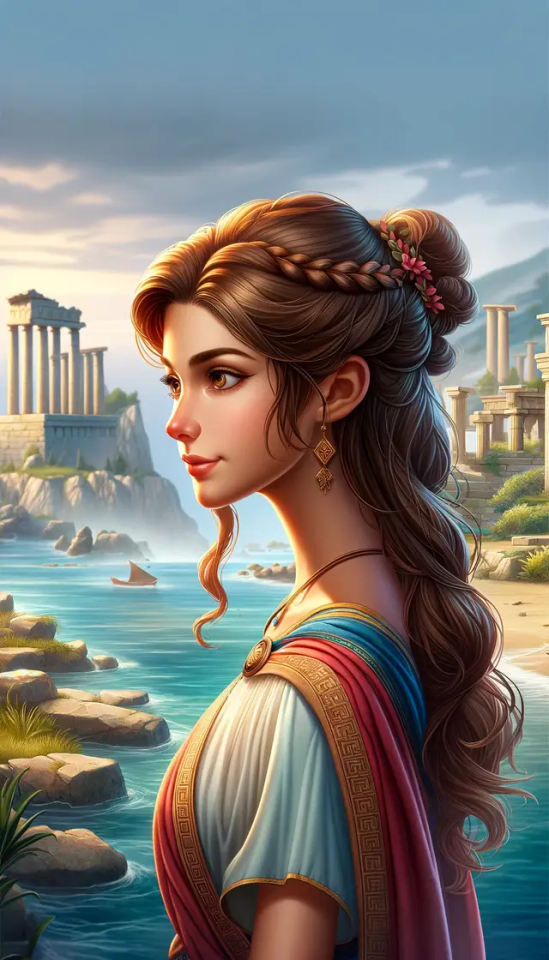
The origins of Medusa are deeply rooted in Greek mythology, where beauty and tragedy intertwine in a captivating and complex story. Initially, Medusa was not the monstrous creature everyone knows but a beautiful young woman known for her extraordinary beauty. She was one of the three Gorgons, daughters of the sea deities Phorcys and Ceto. Unlike her sisters Stheno and Euryale, who were immortal, Medusa was mortal.
Medusa became a priestess in the temple of Athena, the goddess of wisdom and war, requiring a vow of chastity and devotion. However, her life took a dramatic turn when Poseidon, irresistibly attracted by her beauty, seduced her in Athena's temple, an act of great sacrilege. Athena, furious at the desecration of her sanctuary, transformed Medusa into a monster. Her beautiful hair was turned into venomous snakes, and anyone who met her gaze would be immediately turned to stone. This radical transformation not only punished Medusa but isolated her from the world, making her a figure of terror.
Medusa's punishment can be interpreted in various ways. Some see Athena as a goddess who protected her temple and punished the violation of its sanctity. Others view the punishment as a symbol of divine anger and vengeance against corrupted innocence. Medusa's story reflects the complexities of relationships between mortals and gods, and the cruel irony of her fate continues to provoke discussions among scholars and mythology enthusiasts.
Despite her transformation into a monster, Medusa remains a tragic and captivating figure. Her story highlights universal themes of beauty, power, punishment, and redemption, making her one of the most intriguing figures in Greek mythology. Over the centuries, Medusa has become a powerful symbol, whose legend continues to inspire and frighten, representing an important chapter in the rich tapestry of Greek mythology.
The Transformation of Medusa: From Beautiful Priestess to Monster
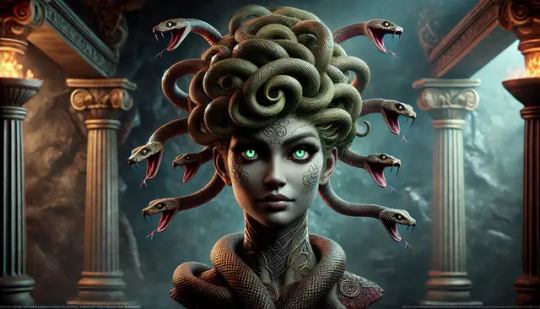
The transformation of Medusa from a beautiful priestess to a petrifying monster is one of the most famous metamorphoses in Greek mythology, laden with symbolic and moral meanings. Originally, Medusa was a beautiful young woman known for her extraordinary beauty. As a priestess of Athena, she was bound by a vow of chastity, devoutly serving the goddess of wisdom and war in her temple. Her life took a dramatic turn when she caught the attention of Poseidon, the god of the sea.
Poseidon, captivated by Medusa's beauty, seduced her in Athena's temple, a sacrilegious act that violated the sanctity of the place. Athena, enraged by the desecration of her temple, transformed Medusa into a monster, drastically altering her physical appearance and marking her future existence.
Medusa's metamorphosis was complete: her beautiful hair was turned into venomous snakes, and her gaze became so powerful that it could turn anyone to stone. This new aspect made Medusa a feared and isolated figure, relegated to the fringes of the known world. Her transformation is rich in symbolism: snakes, often associated with wisdom and rebirth, here become emblems of terror and death, while her petrifying gaze represents the paralyzing effect of fear.
This punishment can also be seen as a critique of female beauty and its perception in society. Medusa, once admired for her beauty, became a monster because of the very quality that made her special. The myth can be interpreted as a reflection on the fragility of beauty and its potential to provoke envy and destruction.
Despite her terrible transformation, Medusa remains a tragic figure, symbolizing corruptible beauty and the power of divine vengeance. Her story continues to be told and reinterpreted, an eternal reminder of the power of the Greek gods and the consequences of transgressions in their capricious and merciless world.
Medusa and Perseus: The Hero and the Monster
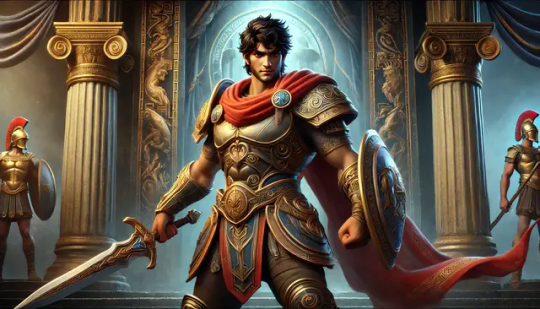
Medusa's story is inextricably linked with that of Perseus, one of the most famous heroes in Greek mythology. Their legend, rich in adventures and twists, tells of courage, cunning, and divine interventions, culminating in one of the most iconic battles between a hero and a monster.
Perseus was the son of Danae and Zeus, conceived under extraordinary circumstances. Danae had been imprisoned in a bronze tower by her father, Acrisius, king of Argos, due to a prophecy that foretold he would be killed by his grandson. However, Zeus, transforming into a shower of gold, reached Danae and made her the mother of Perseus. When Acrisius discovered his grandson's birth, he locked Danae and Perseus in a chest and cast them into the sea. The two survived and were taken in on the island of Seriphos.
Here, Perseus grew up to be a brave young man. His adventure began when the king of Seriphos, Polydectes, who was in love with Danae, sought to get rid of Perseus by sending him on an apparently impossible mission: to bring back the head of Medusa, the most fearsome of the Gorgons. Perseus accepted the challenge and received divine assistance for the task.
Athena and Hermes, the gods who protected heroes, provided Perseus with essential tools: a reflective shield, an adamantine sickle, winged sandals, a kibisis (a magical bag), and Hades' helm, which rendered him invisible. With these gifts, Perseus traveled to the land of the Gorgons.
Medusa lived with her sisters in a remote and inaccessible place. Perseus, using the reflective shield to avoid her petrifying gaze, approached Medusa while she slept and, with a precise stroke of the sickle, decapitated her. From Medusa's mortal wound sprang two extraordinary creatures: the winged horse Pegasus and the giant Chrysaor, symbols of beauty and power emerging from chaos and destruction.
Perseus not only succeeded in his mission but also used Medusa's head as a weapon, exploiting its petrifying power on numerous occasions. Eventually, he gave the head to Athena, who placed it on her shield, the aegis, as a symbol of protection and terror.
The story of Perseus and Medusa is rich in symbolic meanings. Perseus represents the archetypal hero, capable of overcoming impossible challenges through courage, cunning, and divine help. Medusa, on the other hand, embodies terror and corrupted beauty, a creature who, despite being a victim, becomes an instrument of destruction.
This legend continues to be an inexhaustible source of inspiration in culture, art, and literature, reminding us of the complex dynamics between heroes, monsters, and gods in the fascinating world of Greek mythology.

Symbolic Interpretations of Medusa
Medusa is a character steeped in symbolism, with interpretations varying over time and cultures. In Greek mythology, she represents divine punishment and the transformation from beauty to monstrosity, a reflection on the fragility of beauty and the destructive power of divinity. Her ability to petrify with her gaze can be seen as a metaphor for the paralyzing power of fear and terror. In psychological terms, Medusa can be interpreted as a symbol of repressed female power and vengeance. Carl Jung, the Swiss psychologist, saw Medusa as an archetype of the "terrifying mother" and female destructive power. In contemporary culture, Medusa is often revisited as an emblem of resilience and female strength, an icon of empowerment challenging traditional gender roles.
Medusa's Influence in Popular Culture
Medusa's influence in popular culture is vast and enduring, spanning literature, art, cinema, and fashion. In literature, she has appeared in works by authors such as Ovid and Dante, continuing to inspire contemporary writers. In art, her image has been immortalized by artists like Caravaggio and Rubens. Cinema and television have repeatedly revisited the myth of Medusa, with interpretations ranging from epic films like "Clash of the Titans" to TV series and video games. Fashion has adopted Medusa's iconography, with the brand Versace using her head as its logo, symbolizing beauty, power, and mystery. Medusa continues to be a powerful cultural symbol, capable of evoking strong emotions and stimulating deep reflections on human nature and society.
#athena#cultural influence#Gorgons#Greek Mythology#medusa#Perseus#Poseidon#symbolism#mythology#youtube#digital art#fantasy#videos#folklore#mythical creatures#Youtube
8 notes
·
View notes
Text
Legendary Creatures: Gorgons

By Gorgon Painter - Siren-Com Own work, 16 November 2009, CC BY-SA 3.0, https://commons.wikimedia.org/w/index.php?curid=8473789
In ancient Greek mythology, the Gorgons (Γοργώνες) are three sisters who are said to be the daughters of Phorcys (Φόρκυς the god of the ocean prior to the Titans) and Ceto (Κητώ a primordial sea goddess before the Titans) and are the sisters of the Graeae (Γραῖαι three sisters with grey hair from birth and share a single eye and tooth amongst them). Anyone who looked at them was turned to stone. Athena wore a Gorgon head on her aegis, which might be an animal skin or shield, giving her protection from any weapon and cause terror among her enemies. The sisters were named (from oldest to youngest) Euryale (Εὐρυάλη meaning 'far roaming'), Stheno (Σθενώ meaning 'forceful'), and Medusa (Μέδουσα meaning 'guardian' or 'protectress'). Of the three, only Medusa was mortal.

By Jastrow (2006). Image renamed from Image:Gorgons lekythos CdM.jpg, Public Domain, https://commons.wikimedia.org/w/index.php?curid=2184458
Stheno and Euryale were only mentioned in one myth, where they chase Perseus down after the death of Medusa and the symbology of this story was then depicted on Heracles' shield. Euryale is said to have a 'lamenting cry' that Athena then turned into the 'shrill cry' of 'many-voiced songs of flutes' that were slightly out of tune to mimic the 'fast moving jaws of Euryale'. Perseus managed to keep ahead of them because he was wearing Hades' cap. They were depicted running on pottery, with their heads atop their bodies, apparently without a neck, facing the viewer. They had wings on their backs and curly toed boots on their feet and quite wild looking. Later, they gained necks and became less wild looking.

By Unknown author - Self-photographed, CC BY-SA 4.0, https://commons.wikimedia.org/w/index.php?curid=112303464
Medusa is the most well known of the three sisters now because Perseus decapitated her by using his shield to view her in reflection. Her head was then put on Athena's aegis. Her visage was then considered to ward off evil. She is the only one directly said to have snakes as hair, which was then expanded out to all three sisters. Initially, she was depicted as monstrous. Around about the fifth century BCE, she became a beautiful and terrifying. By the time the Romans were telling the story, Medusa was a beautiful woman to begin with until Neptune (Poseidon in Greek) attacked her in Minerva's (Athena in Greek) temple, which led to Minerva cursing her hair in to snakes. Perseus took her head for King Polydectes of Seriphus because the king wanted to marry Perseus' mother and wanted to be rid of Perseus. Athena, Hermes, Hephaestus, and Hades all help Perseus to defeat Medusa. When Medusa dies, Pegasus, the winged horse, and Chrysaor, a giant with a golden sword, spring from her body.

By Morio - Own work, CC BY-SA 3.0, https://commons.wikimedia.org/w/index.php?curid=27748539
After her death, Perseus is said to have flown past Atlas and turned him to stone, then turned Medusa's spilled blood into coral, then used it to rescue the woman who became his wife, the most beautiful woman, Andromeda. He then rescued his mother from a forced marriage before turning the head over to Athena.

By ArchaiOptix - Own work, CC BY-SA 4.0, https://commons.wikimedia.org/w/index.php?curid=87474267
The tripling of Medusa into thee sisters could probably be the result of a greater trend to make goddesses into a trio of sisters. As noted by Jane Ellen Harrison in her Prolegomena: To the Study of Greek Religion, 'The triple form is not primitive, it is merely an instance of a general tendency… which makes of each woman goddess a trinity, which has given us the Horae [goddesses of seasons], the Charites [goddesses of charm, human creativity, and beauty], the Semnai [the goddesses of vengeance], and a host of other triple groups. It is immediately obvious that the Gorgons are not really three but one + two. The two unslain sisters are mere appendages due to custom; the real Gorgon is Medusa.'
5 notes
·
View notes
Text
The Gorgons are Mythological and yet you made them Real.
Content Warning: Gore, descriptions of past abuse, graphic descriptions of people who Ivory experimented on, dark stuff galore Don't read if you don't like.

The smell of bleach, antiseptic and odd chemicals permeated the air, a mix that whilst clean was also sickening with the hidden meanings of why. But it was better than the stench of rot and blood, of waste and burning rubber. Gun poised in front of her, Molly traversed the quiet halls of the Umbrella facility in the Antarctic she'd been sent to by the B.S.A.A. It was supposed to be a Search and Rescue situation but things looked grim. She was sent alone, which was nerve-wrecking and honestly? She found it stupid. They always sent teams out for S&R's. A team, even if forced solo, always found more survivors when split up or if there were no survivors, they could at least report a cleared area. Alone? She had to remember which twisted hall of the lab she'd already traversed. It took hours to explore the first floor of the lab and she let out a quiet groan in finding there was four floors down, then the basement. All of that was time-consuming enough. A team would have had a better chance at searching and reaching any survivors. It really made Molly wonder whether the B.S.A.A was really as competent as they made it seem. Horrors on each level would haunt her memories and dreams to come. With each mangled corpse she passed, she prayed that Hades would lead the innocent to peace and the evil to the worst of the Underworld. Each cell held a miserable body whether they were fully dead or infected and wandering. With each report she picked up and read, each story she learned, Molly felt more and more miserable at being alone because the weight of the deaths of the families, of the children, was almost too much on top of the lack of sleep and psychological terror of every event that lead up to her wandering the halls of the 'Test Subject' Cell Block. Lumps of flesh, bones, limbs and gore piled high in some cells. The smell had Molly nearly puking, but she managed to hold back. Barely. And yet the worst to see yet was the poor souls that were still alive behind the thick glass, behind sealed doors designed to keep them in no matter what they mutated into. But not all of those souls were innocent. "Του Ελαίου... τι σου έχουν κάνει;!" Molly gasped, dropping her gun and pressing both hands to the glass of the cell before her. Monstrous as they were now, she could recognise those eyes, much similar to those of Alexios, of her little siblings. Though now with slit-pupils, emerald and sapphire eyes narrowed in on her features. Wisps of hair still held on their heads between scales, though it looked less like a consequence of their transformation and more because of violence. Her parents had ripped at each other, gashes dug deep into skin and scales. One of her father's eyes was half out the socket, swinging merely by the string of flesh containing the optic nerve, and her mother's jaw was nearly ripped clean off, blood bubbling out of her throat.
One body had its face bashed in, splattered beneath the meaty fist of what used to be her eldest sister, Ophelia. 'They kept my family in here together... that corpse... Dorian?' she thought, her hands shaking. Backing away from the glass, she grabbed her gun and collapsed into a chair, not caring that it smeared blood onto her already messy gear. The three in the cell threw themselves at the glass, roars and screeches coming from inside. But Molly didn't flinch. She just watched blankly, feeling nothing and everything all at one. Was this...? Did the B.S.A.A send her alone because they knew they were here? No, no, surely not... who even did this... Those faces she'd once known, once tried to forget, they were twisted but still recognisable. And she remembered everything that had come with knowing them. Knives, fists and punches, slaps and kicks and screaming. Silent treatments and days locked in her room with no food, no water, her bed covered in specks of old blood. A bucket in the corner because lord knows if she, Sophia or Phoenix made a mess anywhere else, they'd be thrown into the basement, and it was dark and scary and she never wanted to go back, didn't want to be cut by loose teeth left on the floor, didn't want to see her own bones again, wouldn't let them snatch Phia or Nix ever again- And she snapped back to the present moment to silence. They had stopped their fruitless violence towards the cell's thick glass window. She. Was. Okay.
They were cruel and reflected all that was wrong in the world. Molly didn't believe anyone deserved to be subjected to what they had been turned to, but a small part of herself argued that their nightmare visage reflected what they had been all along. They were in pain, clearly, if their noises were any indication. So again she stood and slowly approached the console still barely lit in front of the window. "You will meet your fate at the hands of άδης, for he shall give you what no one on Earth can without committing evil acts themselves. What I do for you is a mercy, because you are suffering and will continue to if I let you live. You may even hurt more people if you slip free." she spoke loud enough for them to hear, though she knew not if they understood. "Σου δίνω το έλεος που δεν σου αξίζει καθόλου. Προσεύχομαι να τελειώσουν τα βάσανά σου. Εάν ο Άδης είναι ελεήμων, επιτρέψτε στον εαυτό σας να αναλογιστεί τα βάσανα που έχετε προκαλέσει. Δεν σε αγαπώ πια, αλλά σε αγάπησαν μια φορά. Αντίο μαμά και μπαμπά. Αντίο Οφηλία. Ντόριαν, έχεις φύγει προ πολλού, αλλά παρόλα αυτά, σε αποχαιρετώ." With her final words, she lowered her gaze and worked her way through the console's many encrypted codes, aided little by passwords left behind by dead scientists. Soon the cell filled with gas, coloured red clouds thick and fast-spreading. Molly only left when they were dead, documentations written by one Dr. Ivory Belladonna-Wesker in hand that detailed the experiments that had been ongoing. Of course that snake, that slimy hag, had something to do with this. And she had been planned to be next on the list. Molly Jericho needed a drink. Vodka, wine, cider, whatever could make her forget shit faster.

Translations: "Του Ελαίου... τι σου έχουν κάνει;!" - "By Eleos... what have they done to you?!" (Eleos, also known as Elea, is the Greek Goddess of Mercy, Clemency, Compassion and Pity) άδης - Hades "Σου δίνω το έλεος που δεν σου αξίζει καθόλου. Προσεύχομαι να τελειώσουν τα βάσανά σου. Εάν ο Άδης είναι ελεήμων, επιτρέψτε στον εαυτό σας να αναλογιστεί τα βάσανα που έχετε προκαλέσει. Δεν σε αγαπώ πια, αλλά σε αγάπησαν μια φορά. Αντίο μαμά και μπαμπά. Αντίο Οφηλία. Ντόριαν, έχεις φύγει προ πολλού, αλλά παρόλα αυτά, σε αποχαιρετώ." translates to- "I grant you mercy you do not deserve at all. I pray your suffering will end. If Hades is merciful, allow yourself to reflect on the suffering you have caused. I don't love you, but you were loved once. Goodbye mother and father. Goodbye Ophelia. Dorian, you are long gone, but still, I bid you farewell."

Dunno how I feel about this fic but ehh.. I was in the mood to write something dark and gory after watching a bunch of RE stuff tonight.
#re ocs and stuff#micha's ocs#Micha's Resident Evil writings#Molly has PTSD and this ain't helpin#She's going to a bar after#Probably will meet Leon there and do karaoke#I swear I'll treat her right and let her have fun after this
4 notes
·
View notes
Text
Candy House - Electric Utopia: Chapter 3
Characters: Sora, Natsume & Tsumugi Season: Spring
TL Note:
In ancient Greek stories, Gorgon refers to a vicious female monster; any one of three sisters with snakes on their heads instead of hair, who can turn anyone that looks at them into stone.
The Amazons were a group of female warriors and hunters who were known for their physical agility, strength, archery, riding skills, and the arts of combat in Greek mythology.

ㅤㅤㅤㅤㅤㅤㅤ< Ten or so minutes later. Inside the ES building – NewDi office. >

Tsumugi: Welcome, Natsume-kun, Sora-kun.
I’m happy to see you’ve come all the way here, but I have some bad news for you two.
Natsume: I did have a feeling it wasn’t something goOD… Shouldn’t you be bringing up the bad news in a more subdued mannER? You make it sound like it’s just gossIP.
All with that smile on your faCE… You’re always like this, SenpAI.
Tsumugi: Well, all I can do in this situation is laugh, really.
I’ll cut to the chase: NewDi is going to be done for.
Sora: Wha? The agency was just established, though!
Tsumugi: Yes, you’re right, but...
Frankly, the agency’s management is in a rather miserable state and we’ll only end up in the red if we continue like this.
At this rate, it’s only a matter of time before NewDi is officially done for.
Sora: Even Sora knew that was coming, but… is it really that bad?
Tsumugi: It is… I did try my best to keep things afloat, but it wasn’t enough.
It’ll be like a post-war clean up, trying to put an end to things while leaving as little damage as possible.
Sora: It sounds like when a game app ends its service~...
Natsume: Not even god or Buddha exists, hUH. Oh, they’re so heartleSS.
Tsumugi: No, no. Actually, a ray of light shone on us this morning.
A miracle happened.
Natsume: Could you not say that in a tone that sounds like you’ve opened a cafe or somethiNG?
Sora: HaHa~♪ Senpai always speaks with the same “colour” no matter what the topic is, so it’s hard to tell whether it’s something good or bad~
Tsumugi: I can’t quite say whether it’s good or bad at this point. It really sounds like some sort of joke.
We received a partnership proposal from a major company this morning.
All of the agency’s problems won’t be solved if we agree to the partnership, but well, at the very least, we should be able to continue our operations normally.
The major company promised us a large amount of funding.
We can use it to pay off the loan we took out to establish the agency as well as for our business funds.
It would make it much easier to manage our funds. If we continue with the partnership, then maybe we can gain even more profits, relieving us of our financial issues.
That’s how the major company spoke. It sounded as if they wanted to help us with our problems.
Natsume: That sounds highly suspicioUS… It might make sense if it was an eccentric individual, but there’s no way a respectable commercial business company would be so charitabLE.
Maybe that company is dealing with some shady things or maybe they’re just scammeRS.
The people who come to help weakened people or organisations aren't messiahs overflowing with good intentions, but swindlers or evil spiriTS.
Tsumugi: Right. I was also suspicious of them… Although it’s not to the same degree as my mother, I also tend to be easily deceived by those sorts of swindlers.
Natsume-kun is clever while Sora-kun has the ability to see the truth no matter what the circumstances are, so I’d like you two to find what’s going on behind this “very convenient offer”.
Sora: So that’s why you called us here? But Sora isn’t very good at handling situations where money is involved~
Tsumugi: Sora-kun, you’re very good at making money in games, aren’t you? I noticed you were earning as much as the national budget in that game where you travel the world on a railroad.
Natsume: Ohh, that’s the game we played during the New Year parTY.
Senpai fell for Sora’s fake tears and said something like “I feel bad for Sora-kun, so I shall become the god of poverty!” before falling to ruIN.
Tsumugi: I–It wasn’t my fault I was tricked! I didn’t think he would go that far for a game! I thought Sora-kun was actually sad…!
Sora: HiHi~♪ It’s your fault for getting tricked! Games aren’t just something you play for fun, you know?
Tsumugi: Aren’t games supposed to be played for fun…?
Natsume: It all depends on how you see iT. In any case, I can’t say anything until I hear the full details of this partnershIP.
Make sure you explain everything from beginning to eND. Knowing you, I bet you’ve already made the unnecessary documents or something, rigHT?
Tsumugi: Ah, yes. I’ll send them to you on “Hallhands”. And sent ♪
Natsume: You’ve gotten used to the app ES forced us to uSE.
Tsumugi: It is convenient. It has all the features an ES idol would need and it’s also free – which is the best thing.
They do say nothing is better than something that’s free, but we need to cut down on as many things as we can right now.
Natsume: I suppoSE. Ugh, idols should be talking about hopes and dreams, but we’ve just been talking about money this whole tiME.
Sora: HuHu~ Master~ don’t you like those sorts of topics?
Natsume: My master says this occasionally, but despite gods being dead and magicians and witches having perished, the concept of money is a type of magic that has still continued to exist to this dAY.
Since we call ourselves modern-day magicians, that’s something we can’t ignoRE.
Tsumugi: I don’t particularly care about that, but have you two downloaded the documents~?
Natsume: Don’t rush mE – I’m reading it right nOW.
Sora: HeHe~ The “colour” of digital info doesn’t change that much, so it’s easy to understand~♪
Natsume: HmM… The major company that offered us the partnership is called “Gorgon CorporatiON”...
Tsumugi: I had difficulty reading it, but is it pronounced “goal-gone”? It sounds like the name of a hitman or some kind of pasta.
Sora: Gorgon[1] is the name of a person that appears in Greek mythology, right?
Natsume: They’re treated more like a monster rather than a persON. Like a witch of sorTS?
Tsumugi: Oh, I’ve heard of that before! Medusa, right? The one that turns you into stone if you look at her!
Sora: Yes ♪ She pops up a lot in video games~
Tsumugi: I see that name in novels too. Her hair is made up of snakes – it sounds rather terrifying.
Natsume: It’s your evolved version, Moppy Four-EyES.
Tsumugi: Hm? I had them confused for the same thing, but aren’t they the same person? Do different countries have different names for them or something?
Natsume: Simply put, I think “Gorgon” is the name of her species while “Medusa” is her own naME.
Sora: It’s like how you’re “human” while your name is “Tsumugi Aoba”, Senpai~♪
Tsumugi: That’s easy to understand! I see~ I thought Medusa was a human with snakes for hair, but she was actually not human, huh.
Natsume: That part is pretty ambiguous, thouGH. It’s a myth from ancient timES. She’s treated like someone who wasn’t human, like the AmazoNS[2].
Sora: That was back when laws and ethics weren’t a concept~

ㅤㅤㅤㅤㅤㅤㅤㅤㅤㅤㅤ← Previous Chapter ᠂ ⚘ ˚⊹˚ ⚘ ᠂ Next Chapter →
2 notes
·
View notes